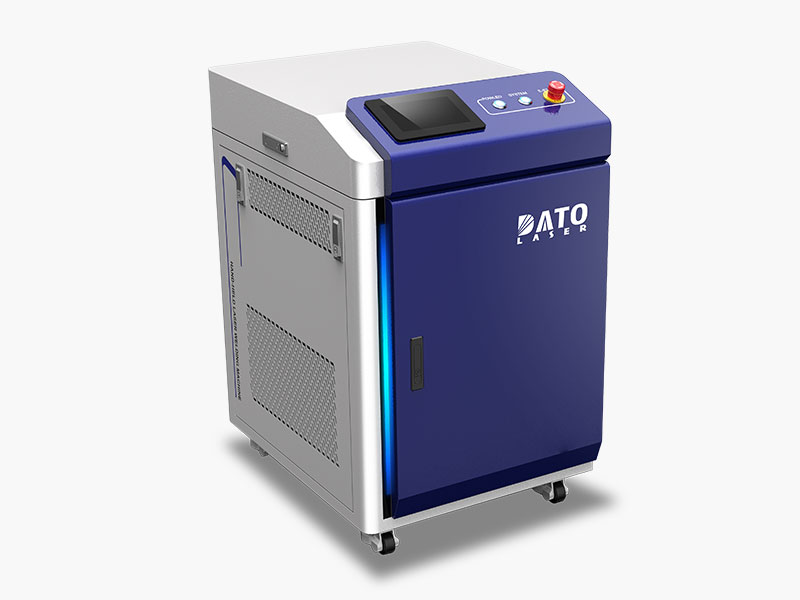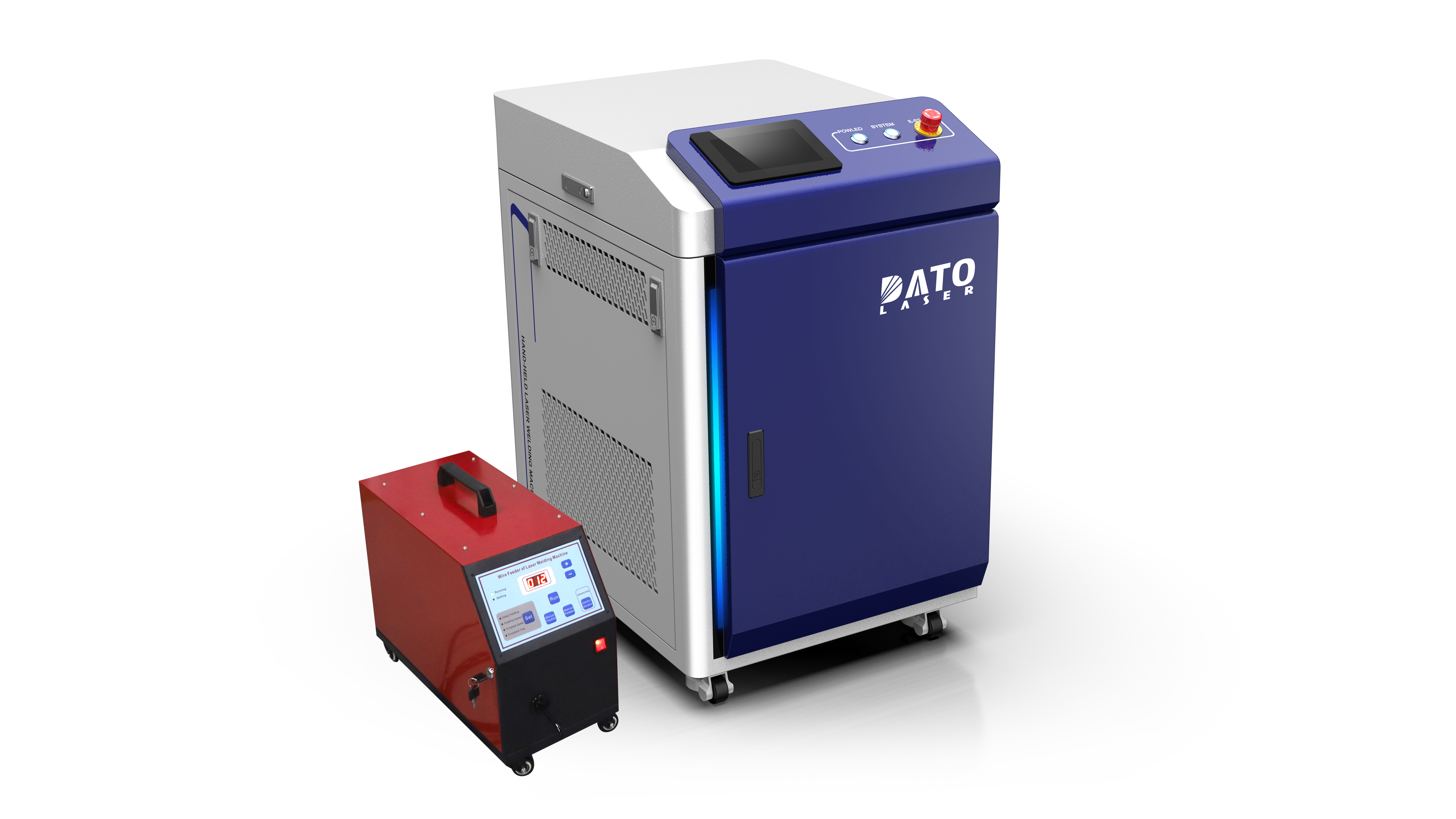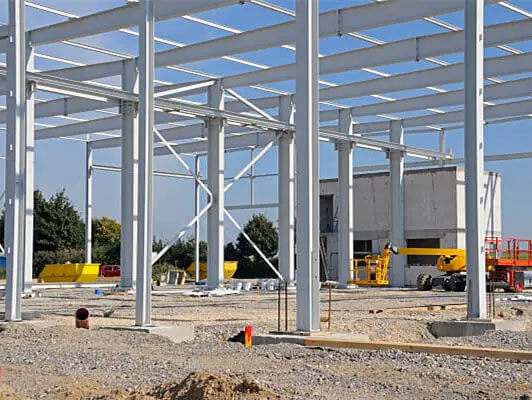The Superiority of Laser Welding: Why Choose Laser Over Traditional Methods?

In the realm of metal fabrication, the choice of welding method is paramount. While traditional techniques like arc welding have served industries for decades, the advent of laser welding has ushered in a new era of precision, efficiency, and quality. At Dato and Leapion, we specialize in providing cutting-edge laser solutions, and we're here to illuminate why laser welding machines are increasingly becoming the preferred choice for modern manufacturing. This article will delve into the primary advantages of laser welding, comparing it to traditional methods and highlighting the significant benefits it offers.
Understanding the Landscape: Traditional Welding vs. Laser Welding
Before we delve into the specifics, it's essential to understand the fundamental differences between traditional welding methods and laser welding. Traditional methods, such as MIG (Metal Inert Gas), TIG (Tungsten Inert Gas), and stick welding, rely on an electric arc to melt and fuse metals. These methods often involve higher heat input, larger heat-affected zones, and can be less precise.
Laser welding, on the other hand, utilizes a highly focused laser beam to melt and fuse metals. This approach offers a more controlled and concentrated heat source, leading to several distinct advantages. Let's explore these benefits in detail.
The Key Advantages of Laser Welding Machines
1. Unparalleled Precision and Accuracy:
One of the most significant advantages of laser welding is its exceptional precision. The highly focused laser beam allows for extremely accurate welds with minimal distortion. This level of precision is difficult to achieve with traditional methods, which often result in wider welds and more significant heat-affected zones. For intricate and delicate components, laser welding provides a level of accuracy that is simply unmatched. This is particularly important in industries such as aerospace, medical devices, and electronics, where precision is paramount. When considering laser welding vs. arc welding in terms of accuracy, laser welding is the clear winner.
2. Minimized Heat-Affected Zone (HAZ):
The heat-affected zone (HAZ) is the area surrounding the weld that is affected by the heat of the welding process. In traditional welding, the HAZ can be quite large, leading to material distortion, weakening, and potential cracking. Laser welding, with its concentrated heat input, significantly reduces the HAZ. This is a crucial advantage, as it minimizes the risk of material degradation and allows for welding of heat-sensitive materials. The smaller HAZ also means less post-weld processing is required, saving time and resources. The question of what are the advantages of laser welding in terms of heat-affected zone is easily answered: laser welding offers a dramatically smaller and more controlled HAZ.
3. Superior Welding Speed and Efficiency:
Laser welding machines offer significantly faster welding speeds compared to traditional methods. The concentrated laser beam can melt and fuse materials rapidly, leading to increased productivity and reduced manufacturing time. This increased welding speed translates to lower labor costs and higher output, making laser welding a more efficient and cost-effective solution for many applications. The efficiency gains are particularly noticeable in high-volume production environments.

4. Enhanced Weld Quality and Strength:
The precise control offered by laser welding results in welds that are not only visually appealing but also possess superior strength and integrity. The minimal heat input and small HAZ contribute to a stronger, more durable weld with less risk of defects. This is crucial for applications where structural integrity and reliability are critical. The high-quality welds produced by laser welding machines also require less post-weld finishing, further increasing efficiency.
5. Versatility and Material Compatibility:
Laser welding machines are incredibly versatile and can be used to weld a wide range of materials, including stainless steel, aluminum, copper, titanium, and even dissimilar metals. This versatility makes laser welding a suitable solution for a variety of industries and applications. While some traditional methods may struggle with certain materials, laser welding can handle them with ease and precision. The question of what are the benefits of using a laser welding machine over traditional methods is answered by its versatility and ability to weld a diverse range of materials.
6. Non-Contact Welding:
Unlike traditional welding methods that require direct contact with the workpiece, laser welding is a non-contact process. This eliminates the risk of contamination and damage to the material, making it ideal for delicate and sensitive components. The non-contact nature of laser welding also allows for welding in hard-to-reach areas, where traditional methods may be difficult or impossible to apply.
7. Reduced Distortion and Warping:
The low heat input of laser welding minimizes thermal distortion and warping of the workpiece. This is particularly important for thin materials and components that require precise dimensional accuracy. The reduced distortion also means less rework and post-weld straightening, saving time and resources.
8. Automation and Integration Capabilities:
Laser welding machines are highly compatible with automation systems, allowing for seamless integration into automated production lines. This is a significant advantage for high-volume manufacturing, as it reduces labor costs and increases productivity. Automated laser welding systems can also perform complex welding tasks with consistent precision and accuracy.
Why Choose Dato and Leapion for Your Laser Welding Needs?
At Dato and Leapion, we are committed to providing our customers with the highest quality laser welding machines that are designed to deliver exceptional performance and reliability. Our machines are built using the latest technology and high-quality components, ensuring long-term durability and precision. We offer a wide range of laser welding solutions to meet the diverse needs of our customers, from handheld laser welders to fully automated systems.
Our Commitment to Quality:
We adhere to strict quality standards throughout the manufacturing process. Our machines are rigorously tested to ensure they meet our high standards for performance and durability. We are proud to be known for our innovative, high-end equipment manufacturing.
Our Expertise and Support:
With over 16 years of experience in the laser industry, we have the expertise to guide you towards the perfect laser welding solution for your application. Our team of skilled engineers and technicians is dedicated to providing you with exceptional support and service.
Our Global Reach:
We participate in over 80 exhibitions annually, showcasing our innovative laser solutions to customers around the world. We are committed to providing our customers with the best possible laser welding technology.

Conclusion: Embracing the Future of Welding with Laser Technology
The advantages of laser welding over traditional methods are clear. From superior precision and minimized heat-affected zones to increased welding speed and versatility, laser welding offers a transformative approach to metal fabrication. By choosing a laser welding machine from Dato and Leapion, you are investing in a technology that will enhance your productivity, improve your weld quality, and reduce your overall manufacturing costs.
If you are looking to upgrade your welding capabilities and embrace the future of metal fabrication, we encourage you to explore our range of laser welding solutions. Contact us today to learn more about how our laser welding machines can benefit your business. We are here to support you every step of the way, ensuring your success with our cutting-edge laser technology.
Related Blogs
-
 Exploring the Safety, Precision, and Industrial Benefits of Laser Surface CleaningIn today’s fast-paced industrial world, where quality, efficiency, and sustainability are top priorities, manufacturers are constantly seeking better ways to clean metal surfaces without compromising material integrityBlog
Exploring the Safety, Precision, and Industrial Benefits of Laser Surface CleaningIn today’s fast-paced industrial world, where quality, efficiency, and sustainability are top priorities, manufacturers are constantly seeking better ways to clean metal surfaces without compromising material integrityBlog -
 A Complete Guide by DATO and LeapionIn modern industry, surface preparation and maintenance play a crucial role in achieving high-quality manufacturing results. Laser cleaning machines have emerged as one of the most innovative, efficient, and environmentally friendly tools for removing contaminantsBlog
A Complete Guide by DATO and LeapionIn modern industry, surface preparation and maintenance play a crucial role in achieving high-quality manufacturing results. Laser cleaning machines have emerged as one of the most innovative, efficient, and environmentally friendly tools for removing contaminantsBlog -
 Laser cleaning machines are revolutionizing industrial surface cleaning by offering a faster, safer, and more eco-friendly alternative to traditional methods. Whether removing rust, paint, oil, oxide, or other surface contaminants, laser cleaning has become a cutting-edge solution in manufacturing,Blog
Laser cleaning machines are revolutionizing industrial surface cleaning by offering a faster, safer, and more eco-friendly alternative to traditional methods. Whether removing rust, paint, oil, oxide, or other surface contaminants, laser cleaning has become a cutting-edge solution in manufacturing,Blog -
 Introduction: Transforming EV Battery Manufacturing Through Laser TechnologyThe electric vehicle revolution has accelerated dramatically over the past decade, bringing with it unprecedented challenges and opportunities in battery manufacturing. As global automakers commit billions to electrificationBlog
Introduction: Transforming EV Battery Manufacturing Through Laser TechnologyThe electric vehicle revolution has accelerated dramatically over the past decade, bringing with it unprecedented challenges and opportunities in battery manufacturing. As global automakers commit billions to electrificationBlog













